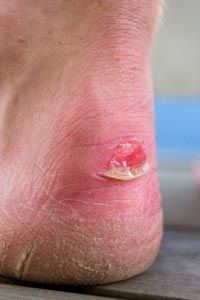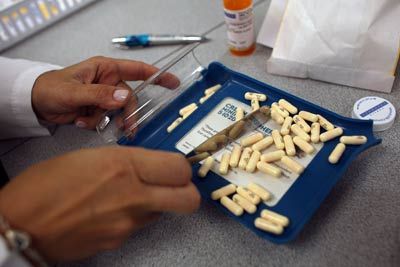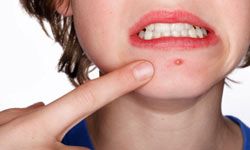Friction blisters are painful. Sure, those new boots looked great on the shelf and even better on your feet. But until you break them in, you'll likely be in a lot of pain -- especially if you bought the boots a size too small. Ill-fitting footwear is the most common cause of friction blisters. However, they can also be caused by excessive moisture. That's why friction blisters are so prevalent in sports and the military. Athletes and soldiers are constantly moving and sweating, creating the perfect conditions to develop a blister.
Though they do hurt, the formation of a blister is actually your body's way of protecting you. A friction blister forms as your skin rubs against material. Skin becomes irritated and red, and the layers of the skin begin to separate. Your body, in an effort to reduce the offending friction, produces fluid that fills the area between the layers of your now red, sore skin and a friction blister is born [source: Schwartz].
Advertisement
We've all had a friction blister at some point or another in our lives, and chances are we'll have a few more. So the best thing we can do is learn how to prevent them. It can be as easy as changing your socks more frequently. Unfortunately, you can do everything in your power to prevent a blister and still get one, so you should also know how to treat them.
Keep reading to find out all the different ways you can help prevent and treat friction blisters.
Advertisement


